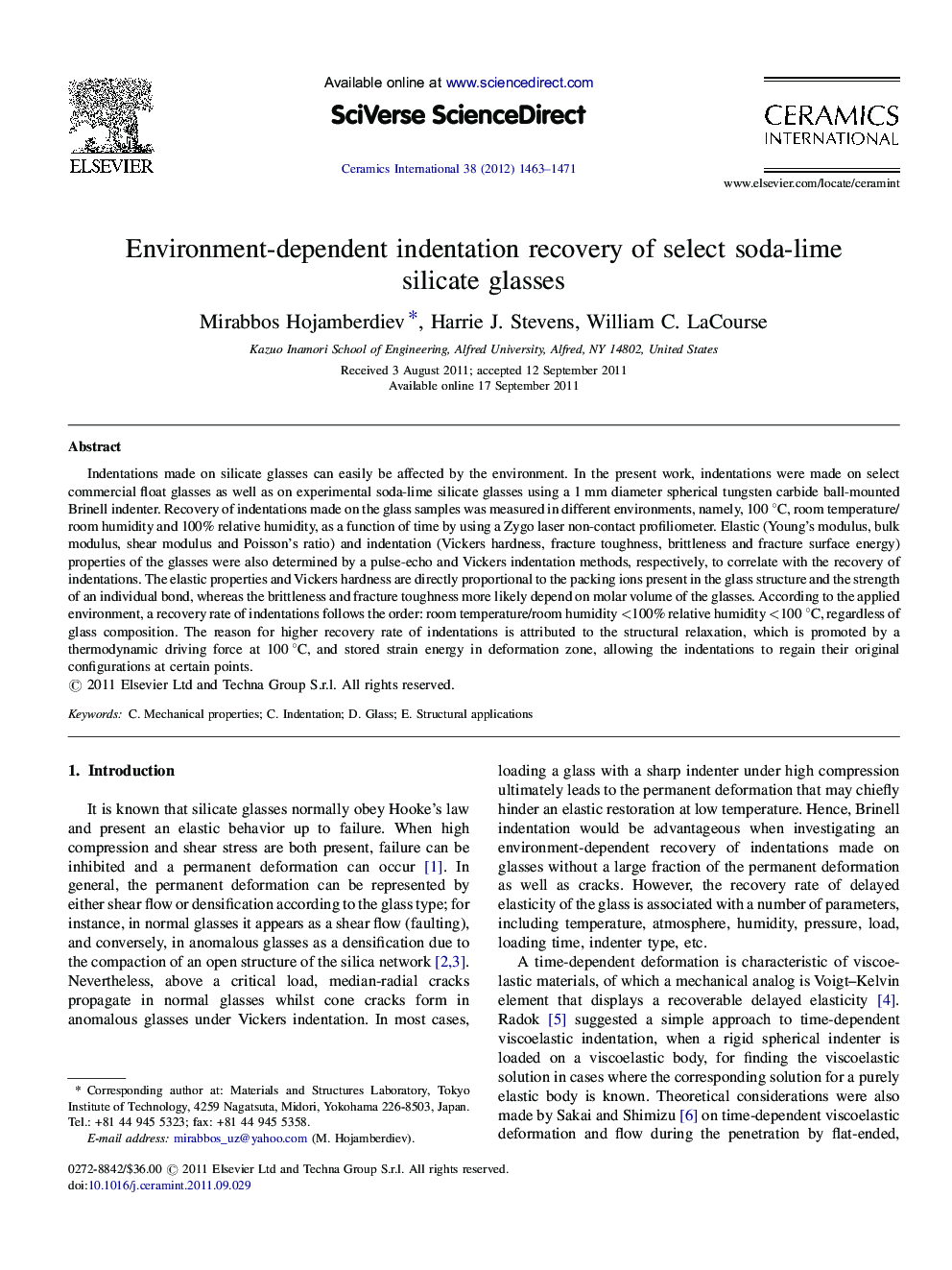| کد مقاله | کد نشریه | سال انتشار | مقاله انگلیسی | نسخه تمام متن |
|---|---|---|---|---|
| 1462546 | 989633 | 2012 | 9 صفحه PDF | دانلود رایگان |

Indentations made on silicate glasses can easily be affected by the environment. In the present work, indentations were made on select commercial float glasses as well as on experimental soda-lime silicate glasses using a 1 mm diameter spherical tungsten carbide ball-mounted Brinell indenter. Recovery of indentations made on the glass samples was measured in different environments, namely, 100 °C, room temperature/room humidity and 100% relative humidity, as a function of time by using a Zygo laser non-contact profiliometer. Elastic (Young's modulus, bulk modulus, shear modulus and Poisson's ratio) and indentation (Vickers hardness, fracture toughness, brittleness and fracture surface energy) properties of the glasses were also determined by a pulse-echo and Vickers indentation methods, respectively, to correlate with the recovery of indentations. The elastic properties and Vickers hardness are directly proportional to the packing ions present in the glass structure and the strength of an individual bond, whereas the brittleness and fracture toughness more likely depend on molar volume of the glasses. According to the applied environment, a recovery rate of indentations follows the order: room temperature/room humidity <100% relative humidity <100 °C, regardless of glass composition. The reason for higher recovery rate of indentations is attributed to the structural relaxation, which is promoted by a thermodynamic driving force at 100 °C, and stored strain energy in deformation zone, allowing the indentations to regain their original configurations at certain points.
Journal: Ceramics International - Volume 38, Issue 2, March 2012, Pages 1463–1471